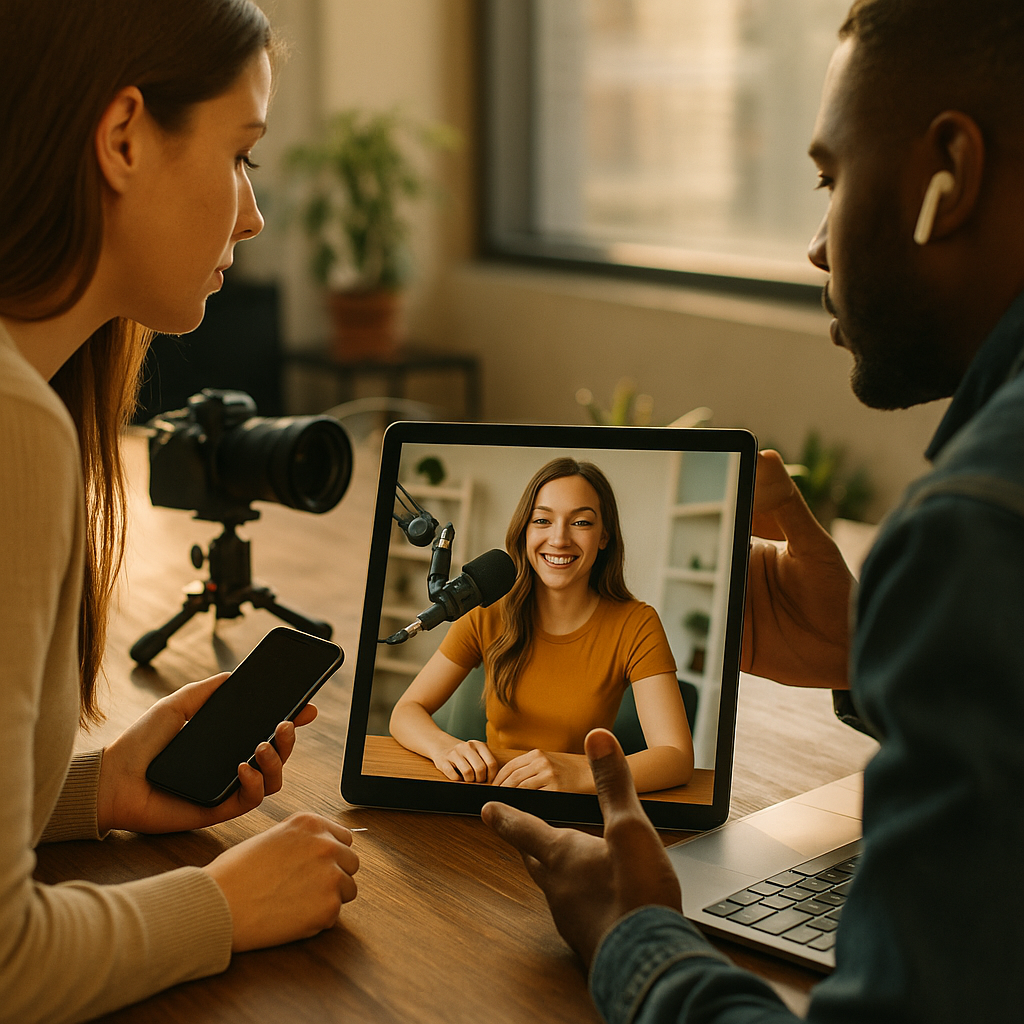Streamlining brand-creator communications with tech is reshaping digital marketing in 2025. As collaboration between brands and creators grows more complex, leveraging the right tools is crucial for clarity, efficiency, and creative impact. Discover how modern solutions are simplifying workflows, cutting miscommunication, and revolutionizing partnership success in today’s fast-paced digital ecosystem.
Digital Collaboration Tools: The Backbone of Modern Brand-Creator Communication
Effective communication between brands and creators relies heavily on robust digital collaboration tools. Platforms such as Slack, Trello, and Asana dominate the workflow landscape in 2025, enabling real-time file sharing, transparent task management, and seamless feedback cycles. With multi-channel notifications and centralized project dashboards, brands and creators minimize delays and maintain alignment from creative ideation to final approvals.
Recent studies show that 82% of marketers credit integrated communication platforms with reducing project turnaround time. By using these tools, brands ensure that expectations, deliverables, and deadlines remain crystal clear—critical in highly competitive markets. Furthermore, AI-powered project management assists in priority setting, scheduling, and automating mundane tasks, allowing creators to focus on content quality while brands oversee campaign consistency.
Brand Messaging Consistency: Leveraging Content Management Systems
Maintaining consistent brand messaging is a key challenge in brand-creator collaborations. Content Management Systems (CMS) have become pivotal in 2025 for storing assets, guidelines, and approved messaging templates. By providing creators with instant access to these resources, brands guarantee adherence to voice and image standards across every campaign.
Advanced CMS solutions now feature intelligent version tracking and digital rights management, ensuring that creators always use the latest assets while protecting branded content. Automated approval workflows within these systems significantly cut down on email chains and manual follow-ups, saving teams countless hours and reducing the risk of off-brand content going live.
Real-Time Feedback and Revision: The Rise of Integrated Review Platforms
Feedback loops are the heartbeat of every successful brand-creator collaboration. In the past, delayed communication—and feedback lost in email threads—threatened campaign momentum. Today, integrated review platforms like Frame.io and Figma’s comment features allow stakeholders to leave precise, contextual notes directly on creative assets.
This real-time feedback ensures a collaborative evolution of content, from ideation to publication. Brands and creators can resolve ambiguities immediately, fostering mutual understanding and accelerating the revision process. Data from 2025 highlights that brands using real-time review tools experience a 30% reduction in average revision cycles.
Automated Workflow Integrations: Efficiency Through Smart Technology
The automation of routine tasks forms the cornerstone for streamlining brand-creator communications. Workflow integrations powered by AI and APIs unify disparate tools—for example, linking a CMS with project management software and communication apps—so every stakeholder gets up-to-date information instantly.
- Scheduling automation: Automated calendar syncs prevent missed deadlines by sending alerts and reminders.
- Template-driven requests: Brands speed up outreach by leveraging templated briefs and contracts.
- Auto-distribution: Approved content uploads directly to social platforms, further minimizing manual tasks.
This interconnected approach guarantees that every team member operates with the same, updated information, eliminating miscommunication and freeing up valuable creative time. Brands also improve compliance and data accuracy through cross-platform tracking and analytics.
Measurement and Insight: Data-Driven Communication Enhancements
Data analytics empower brands and creators to refine their communication strategies continually. In 2025, state-of-the-art dashboards offer real-time visibility into campaign milestones, performance metrics, and communication responsiveness. This transparency enables both sides to identify bottlenecks, set actionable KPIs, and adjust workflows on the fly.
For instance, tracking turnaround times for feedback and deliverables helps brands identify process inefficiencies. Creators benefit from insights into which types of guidance or feedback correlate with optimal content performance. By harnessing data from all communication channels, brands and creators build a culture of continuous improvement and achieve better results together.
Building Trust and Transparency: Tech’s Role in Strengthening Partnerships
Strong relationships between brands and creators are founded on trust and transparency. Tech solutions now facilitate far more than just communication—they foster accountability and authenticity. Digital contracts, clear audit trails, and secure file exchanges ensure that every agreement and creative exchange is documented and protected.
Many brands have embraced blockchain-powered verification for intellectual property and contract execution, minimizing disputes and fostering a spirit of partnership. In the age of influencer regulation, readily accessible communication records also protect both parties from compliance breaches. The result is a collaborative environment where innovation and creativity can thrive without administrative friction.
In 2025, streamlining brand-creator communications with tech is no longer optional—it’s essential to campaign success. By leveraging integrated tools, automation, and data analytics, brands and creators build efficient, transparent, and results-driven partnerships. Invest in the right technology today to future-proof your collaborative marketing efforts and stay ahead in the digital race.
Frequently Asked Questions
-
What are the best tools for streamlining brand-creator communications in 2025?
Top tools in 2025 include advanced project management platforms (Asana, Trello), real-time feedback apps (Frame.io, Figma), and centralized CMS platforms. These tools facilitate seamless collaboration, quick revisions, and consistent asset management across teams and campaigns.
-
How does technology prevent miscommunication between brands and creators?
Tech platforms synchronize updates, automate notifications, and centralize assets and feedback. This real-time connectivity ensures everyone stays informed, which reduces misunderstandings and speeds up decision-making throughout the campaign lifecycle.
-
Can automation replace human communication in brand-creator relationships?
While automation streamlines routine exchanges and task management, human input remains critical for creative direction, feedback, and relationship-building. Technology enhances, rather than replaces, the collaborative process.
-
Why is data analytics important in improving brand-creator communication?
Data analytics enables both brands and creators to identify patterns, track engagement and productivity, and refine processes for better results. This leads to faster delivery, higher-quality content, and more effective partnerships.
-
What role does blockchain play in brand-creator communication?
Blockchain adds security and trust by enabling transparent, tamper-proof record-keeping for contracts and intellectual property exchanges. This technology minimizes disputes and supports compliance in complex, multi-party collaborations.
